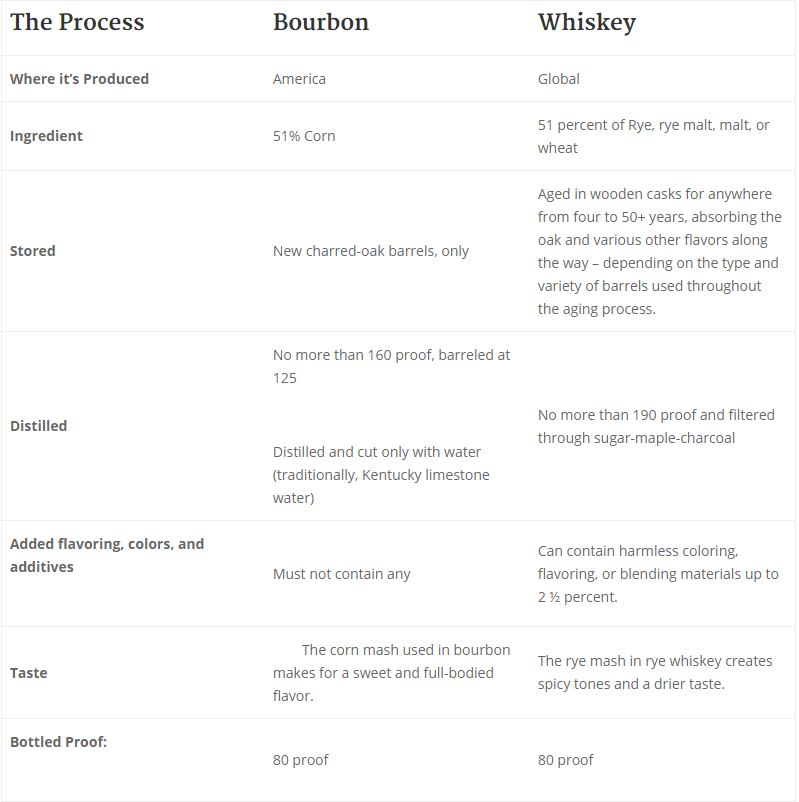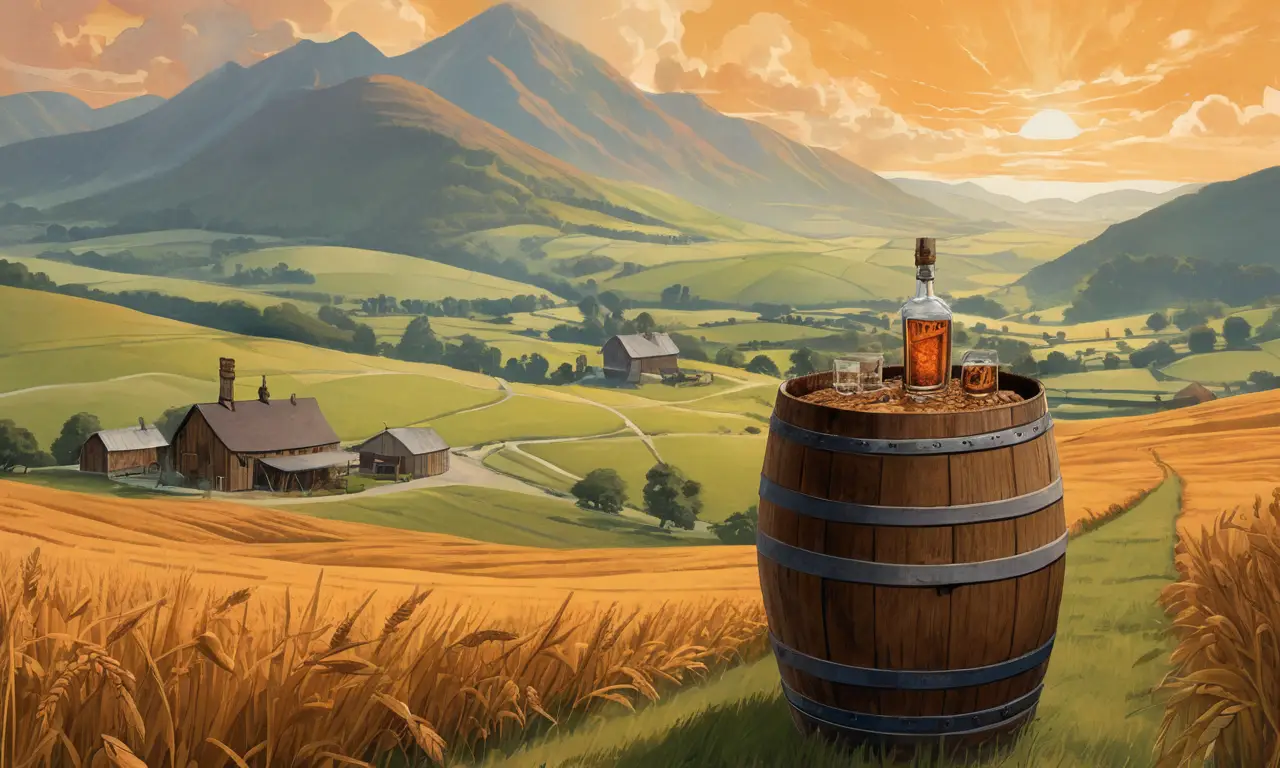
The world of spirits is vast and diverse, offering a tantalizing array of flavors and experiences. Among the most popular and celebrated are whiskey, bourbon, scotch, and brandy. While often used interchangeably, these terms actually denote distinct categories of alcoholic beverages, each with its own unique production methods, flavor profiles, and cultural significance. This article delves into the intricacies of these spirits, providing a comprehensive guide to their origins, characteristics, and distinctions.
From understanding the fundamental definition of whiskey to exploring the nuances of bourbon, scotch, and brandy, we’ll unravel the complexities that set these spirits apart. By the end of this exploration, you’ll be well-equipped to navigate the world of spirits with newfound knowledge and appreciation.
Whiskey Defined
Whiskey, at its core, is a distilled spirit derived from fermented grain mash. This broad definition encompasses a wide range of styles, each with its own regional variations and production techniques. Generally, whiskey undergoes a double distillation process, resulting in a clear liquid that is then aged in oak barrels for a minimum period. The aging process imparts color, flavor, and complexity to the spirit, contributing to its unique character.
The type of grain used in the mash bill significantly influences the final flavor profile of the whiskey. Common grains include barley, corn, rye, and wheat. Each grain contributes distinct characteristics to the spirit, resulting in a diverse spectrum of flavors. For example, whiskeys made with a high percentage of rye tend to have spicier notes, while those with more corn exhibit sweeter profiles.
The aging process is crucial in shaping the character of whiskey. During maturation, the spirit interacts with the oak barrels, extracting tannins, vanillin, and other compounds that contribute to its color, aroma, and taste. The length of aging also plays a significant role, with longer aging periods generally resulting in smoother, more complex flavors.
Bourbon Explained

Bourbon, a type of American whiskey, is renowned for its distinctive flavor profile and strict production regulations. To be classified as bourbon, the spirit must meet specific criteria outlined by the United States government: it must be made from at least 51% corn, aged in new charred oak barrels, and distilled to no more than 160 proof (80% alcohol by volume).
The high corn content in bourbon contributes to its characteristic sweetness and smooth character. The aging process in new charred oak barrels imparts notes of vanilla, caramel, and spice, further enhancing the complexity of the spirit.
Bourbon Regions
While bourbon is produced throughout the United States, certain regions have become synonymous with this iconic spirit. Kentucky, known as the “Bourbon Capital of the World,” boasts a rich history of bourbon production and is home to numerous renowned distilleries. Other notable bourbon producing states include Tennessee, Indiana, and Virginia.
Bourbon Styles
Within the realm of bourbon, there are various styles that cater to diverse palates.
- Straight Bourbon: This classic style adheres to the strict regulations outlined above and is typically aged for at least two years.
- Small Batch Bourbon: Produced in limited quantities, these bourbons often feature unique flavor profiles due to the use of specific grains or aging techniques.
- Single Barrel Bourbon: Bottled directly from a single barrel, these bourbons showcase the distinct characteristics of that particular barrel.
Scotch Whisky Production
Scotch whisky, hailing from Scotland, is renowned for its complex flavors and adherence to strict production regulations. To be classified as scotch whisky, the spirit must be produced in Scotland, distilled twice, aged for at least three years in oak barrels, and bottled at a minimum of 40% alcohol by volume.
Malted Barley
The primary ingredient in scotch whisky is malted barley, which undergoes a process called germination to convert starches into fermentable sugars. This malting process imparts unique flavors and aromas to the spirit.
Distillation Process
Scotch whisky production involves two distillations, each contributing to the spirit’s complexity. The first distillation produces a low-proof liquid known as “wash,” which is then distilled again in pot stills to create a higher-proof spirit.
Regional Variations
Scotland boasts diverse regions, each producing scotch whisky with distinct characteristics.
- Highland: Known for its robust and peaty whiskies.
- Lowland: Characterized by lighter and smoother whiskies.
- Islay: Renowned for heavily peated whiskies with medicinal and smoky notes.
Brandy Distillation

Brandy, unlike whiskey, is distilled from fermented fruit juice, typically grapes. The distillation process concentrates the alcohol content and extracts flavors from the fruit. Brandy can be made from various fruits, including apples, pears, and cherries, but grape brandy is the most common type.
Aging Process
Many brandies are aged in oak barrels, which impart color, aroma, and flavor to the spirit. The aging process can range from a few months to several decades, depending on the desired style and complexity.
Cognac and Armagnac
Two renowned types of brandy are Cognac and Armagnac. Both are produced in France but have distinct production methods and characteristics.
Flavor Profiles and Comparisons
Whiskey, bourbon, scotch, and brandy each offer a unique spectrum of flavors, influenced by their production methods, ingredients, and aging processes.
- Bourbon: Typically characterized by notes of vanilla, caramel, oak, and corn sweetness.
- Scotch Whisky: Exhibits a wide range of flavors depending on the region and style, from smoky and peaty to fruity and floral.
- Brandy: Often possesses rich, complex flavors derived from the fruit used in its production, with notes of dried fruits, spices, and oak.
Conclusion
Understanding the distinctions between whiskey, bourbon, scotch, and brandy allows for a deeper appreciation of these diverse spirits. Each category boasts unique characteristics, flavor profiles, and cultural significance. Whether you prefer the smooth sweetness of bourbon, the complex smokiness of scotch, or the rich fruitiness of brandy, there is a spirit to suit every palate.
